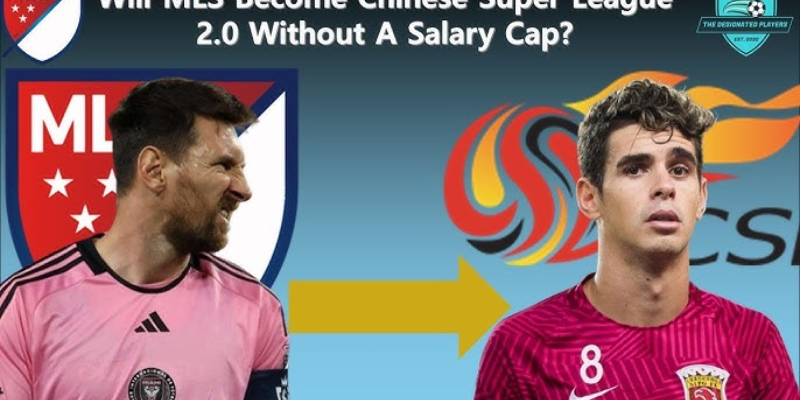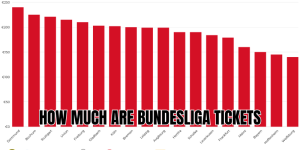MLS removing its salary cap completely seems unlikely — but meaningful changes are on the table. The league is tweaking roster rules, increasing flexibility, and expanding “loopholes” like Designated Players (DPs), General Allocation Money (GAM), Targeted Allocation Money (TAM), and U-22 initiative spots. These shifts suggest MLS is evolving, but a wholesale removal of the cap? Not in any public plan yet.
Below, KottuGoal takes you through the current state, the pressures, the pros & cons, what would need to change, and where things might be heading.
What is the MLS salary cap right now

MLS operates with a soft salary cap, meaning teams have a base limit on what they can spend on most of their roster, but with many exceptions and mechanisms that allow exceeding that limit under regulated terms.
Some key numbers and structures in 2025:
- Each team has a senior roster salary budget around $5.95 million USD.
- Teams receive General Allocation Money (GAM) and Targeted Allocation Money (TAM) to “buy down” salary-budget charges, sign promising players, or manage contracts.
- There are Designated Player slots (DPs) that allow clubs to sign top stars whose salaries are way above what counts against the cap. For example, a DP aged 24 or older carries a maximum salary budget charge of ~$743,750 in 2025—even if their actual pay is much higher.
- Clubs also have “U22 initiative” spots, supplemental rosters, homegrown player exceptions, and buy-outs that give extra roster flexibility.
Overall, the cap works as more of a framework than a rigid ceiling: allowances and special categories give clubs ways to attract stars and offer competitive salaries while maintaining some parity.
Why people want the cap removed

There’s growing debate among fans, pundits, and some former players/coaches about whether the cap is holding MLS back. These are the main arguments:
- Global competitiveness & marquee signings Critics like Andrea Pirlo have argued MLS needs to ditch or loosen the cap if it wants to compete with Europe’s top leagues and attract elite talent.
- Player retention Young or breakthrough players often go abroad for better contracts, both for money and prestige. A tighter salary structure can make it hard for MLS clubs to keep rising stars.
- Revenue growth vs spending restrictions The leaguegue’s revenues, club values, broadcast deals, and sponsorship are increasing. As finances grow, some believe the cap limits how much teams can invest in their squads. Forbes has noted that current payrolls are well below what other major North American leagues allow relative to revenue.
- Avoiding being a “retirement league” Another frequent critique: if MLS is seen mainly as a place stars go near the end of their career, rather than a competitive home or stepping stone, its reputation among global fans and talent may suffer.
Why MLS is unlikely to remove the cap completely

There are several obstacles and reasons why fully removing the salary cap is not currently on the horizon:
- Financial risk and stability Without a cap, richer teams could drastically outspend weaker ones, potentially destabilizing the league. MLS has been cautious about overextending club finances in order to avoid bankruptcies, debt issues, or wildly inconsistent competitiveness.
- Parity is central to MLS identity The idea that any team can make the playoffs, win titles, or host big moments helps drive interest in multiple markets. One of the arguments for the cap is that it keeps smaller-market teams alive and relevant. Removing it risks creating a “rich-club elite” dominated structure more like many European leagues.
- Regulatory, legal, and union issues Any major change to salary structure has to be negotiated with the Players Association, and must align with existing collective bargaining agreements. Removing or drastically changing the cap would likely provoke lengthy bargaining and possibly cultural resistance.
- Existing exceptions already doing the heavy lifting MLS already has ways to get around strict caps (DPs, GAM / TAM, U22, buy-outs). It may be more feasible to expand or tweak those rules rather than scrapping the cap entirely. Incremental change is often more realistic than radical overhaul.
What changes are being made or considered
While full removal of the salary cap does not appear to be imminent, MLS is evolving. Here are some recent changes and things under discussion that suggest direction:
- Roster rule refinements In 2025 MLS updated its roster rules and regulations: two buyouts.
- More GAM / TAM flexibility The General Allocation Money pool is larger, and clubs have more pathways to use it. For example, clubs choose between roster models that trade off number of Designated Players vs number of U22 Initiative players plus additional GAM.
- Minimum salaries rising Players at the senior minimum salary or reserve levels are seeing increases. This helps with fairness and gives more incentive and stability for younger and home-grown players.
- Pressure from global competition With leagues like the Saudi Pro League, and European clubs increasingly looking to North America for talent and markets, MLS is under pressure to offer better contracts, higher visibility, and more competitiveness. This tends to push toward relaxing spending restraints.
What would need to happen for MLS to remove or overhaul the cap
If MLS ever were to remove the salary cap (or replace it with a more relaxed system), these would be necessary:
- Negotiation in the next CBA The current Collective Bargaining Agreement would need to include terms that allow for either a higher cap, no cap, or a replacement structure (luxury tax, tiered cap, revenue-share model, etc.).
- Revenue growth to support higher spending TV rights, sponsorship, merchandising, attendance, expansion markets — these all need to keep growing so that clubs can spend more without risking financial harm.
- New financial governance structures Safeguards would need to be in place to avoid overspending, ensure clubs remain solvent, and prevent competitive imbalance.
- Alignment with market expectations Players, agents, international stars will expect better pay and contract terms; fans will expect higher quality and more big-name signings; media will spotlight comparisons. MLS would need to deliver value in return for the risk of loosening constraints.
- Would likely be incremental More probable than an abrupt removal is a gradual loosening: more DP spots, larger allocation monies, higher salary thresholds, or a “luxury tax” system instead of a strict cap.
Likely scenarios looking ahead
Here are some possible futures for MLS with regard to the salary cap:
| Scenario | What it looks like | Pros | Cons |
| Moderate loosening | More generous GAM/TAM, larger U22 initiative, more DP slots, bigger minimum salaries. | Attract more stars, retain emerging players, increase fan interest globally. | Higher costs, risk of imbalance if richer teams dominate. |
| Tiered cap or revenue-share model | Clubs with bigger revenues can spend more; smaller clubs still constrained but with more support. | Fairer than free-for-all, allows growth in promising markets. | Harder to administer; may create second class of clubs. |
| Luxury tax instead of cap | Spend above cap is taxed / penalized but allowed. | Enables freedom for clubs with resources, while still warning against reckless spending. | Could undermine parity; some clubs may absorb taxes more easily. |
| No cap (or near-no cap) | Almost full spending freedom, limited only by club budgets, league financial rules. | Big stars, big signings, big media buzz; can attract top talent with fewer restrictions. | Very risky for financial stability; could widen the gap drastically; could alienate smaller markets. |
Of these, the Moderate loosening scenario seems most plausible in the next 2-3 years. A full removal is more likely in the distant future — and only if financial & structural safeguards are in place.
Conclusion
Will MLS remove salary cap? Probably not entirely any time soon. But expect more loosening, more flexibility, and evolving rules that inch the league toward greater spending power and competitiveness. The cap won’t disappear overnight, but its edges will continue being stretched.
For fans of MLS, these changes mean:
- More exciting signings and possibly more global stars coming sooner.
- Better pay and contract stability for rising and homegrown players.
- Still some balance preserved so smaller clubs can compete.
If you follow MLS, keep an eye on the 2026 Collective Bargaining Agreement, as it’s likely to be the moment when some of those changes could officially be codified.






